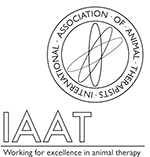Canine Day Summary – 23rd February 2013
‘Mechanical gait asymmetry confounds lameness assessments’
Dr Robert Colborne, BSc, MHK, PhD
Equines and canines have been shown to have ‘handedness’ ie they will lead with a particular leg or turn a particular way round an obstacle. We are all asymmetric and bones, joints, ligaments and muscles can develop differently on each side of our bodies even though differences may not be visible on observation of the gait. Bob believes that as symmetry of motion is considered a hallmark of soundness in gait, we need to consider whether ‘normal’ gait is in fact symmetric.
The causes of these behavioural, structural and functional asymmetries are multifactorial and largely unknown, but handedness definitely impacts lameness and could help explain why some unilateral joint diseases develop. More research is needed to discover if the approach to an orthapaedic condition should vary depending on the affected side.
‘Review of pet nutrition for health and weight management’
Dr Helen Bond, BVetMed, PhD, MBA, MRCVS
Diet can help with most clinical conditions, but it is the type, quality and amount of the nutrients in the ingredients that is crucial to efficacy.
Osteoarthritis benefits from a multi-modal approach and nutrition and weight management are a large component of this. A 14 year study has shown that a reduced calorie intake in dogs to maintain a lean body condition, can increase life span by 15%. In addition the study showed there was delayed onset and reduced severity of osteoarthritis.
Nutrients which have been shown to provide support for joint mobility are omega-3 fatty acids, antioxidants, glucosamine and chondroitin.
Senior dogs may also develop cognitive dysfunction or dementia which can also be helped with nutrition. In this condition the brain loses its ability to use glucose and cognitive ability can be regained by incorporating medium chain triglycerides into the diet.
‘The canine elbow: the current assessment and treatment approach at Fitzpatrick referrals’
The Fitzpatrick Physio Team
Elbow dysplasia has a variety of clinical signs and pathologies which has no single treatment. The pathology must be understood in order to optimize the treatment outcome. Diagnosis is made via clinical examination, radiographs and arthroscopy.
Fitzpatrick have developed an algorithm in order to arrive at the best treatment approach for each pathology. Once diagnosed, the algorithm is then used to choose the most appropriate treatment method. These methods include subtotal coronoid ostectomy, arthoscopic fragment removal, ulna osteotomy, sliding humeral osteotomy, biceps ulna release procedure and total elbow replacement.
Rehabilitation is started as soon as possible following surgery to ensure the best outcome.
‘Understanding the early signs and signals dogs give during treatment and how to respond to make treatment successful and enjoyable’
Winkie Spiers, Dog trainer/behaviour consultant, Bowen therapist, MAPDT, MBPTA, MPDTE, MECBS
When a dog is anxious for whatever reason it will give off many signals which if ignored may ultimately lead to a bite. By recognizing how they feel and responding appropriately the situation can be calmed and the treatment outcome improved.
Some of these signs include head turning, lip licking and very enlarged or contracted pupils. If signs of anxiety are seen then treatment needs to slow down and the physiotherapist should use body language and eye contact to help the dog feel more confident and relaxed.
Winkie believes first impressions are very important so time is needed to establish trust in order for the therapist/patient relationship to start in a positive way.
Always remember that each dog is an individual and they all have different experiences and coping abilities.
‘Peripheral nerve anatomy, pathology and palpation’
Dr Mike Targett, MA, VetMB, DipECVN, PhD, MRCVS
Lower motor neuron (LMN) disease in small animal practice is under diagnosed and often mistaken for orthopaedic lameness in the early stages.
The commonest pathologies encountered are as follows:
Primary myopathies
Traumatic injuries
Brachial plexus neoplasia
Idiopathic polyradiculoneuritis
Myaesthenia gravis
Botulism
Distal denervating disease
There are various diagnostic methods including electromyography, biopsy and blood tests. Most of these pathologies are similar in that they start in the lower limb, they are usually self-limiting and will spontaneously regress. They have no treatment except nursing and physiotherapy.
‘Canine locomotion and post-operative outcome measures’
Karl Jones, MSc Vet Phys, Bsc(Hons), MCSP, ACPAT Cat A
Gait analysis has a very important role in ascertaining the functioning of the body. Any gait is made up of strides and a stride is made up of step cycles. A step cycle can be broken down to a stance phase – type and duration – and a swing phase. Abnormalities in either phase may help diagnose lameness.
A human study has used a figure of 8 shuttle run test to measure discrepancies pre and post-surgery. Karl has made the first study of its kind to use this idea in canines to establish a range of lap time values between healthy and surgically managed cranial cruciate ligaments.
The study concluded that the figure 0f 8 test can be a more sensitive measure of return to function than more traditionally used methods. It has also established the range of normal lap times for future reference.




Find me on: